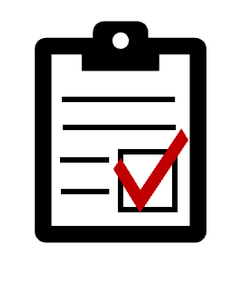Maximum Planning: Part I Hot
The purchase or sale of stock on an internal or intra-company basis (from partner to partner, employer to employee, or parent to son or daughter) places significant demands on the cash flow of a financial services business. Think of it this way - a third-party sale/acquisition usually brings in a second cash flow stream of equal or greater size than that of the selling advisor, along with the buying advisor’s ability to write off every dollar of the purchase price (assuming an asset sale/acquisition).
An internal or intra-company buyer/employee, however, usually has no direct, personal, or isolated cash flow stream of their own to rely on. To make matters worse, they have to pay for the acquired stock of the business on an after-tax or basis approach, requiring an additional 30% of the purchase price, perhaps more (depending on the buyer/employee/son/daughter’s tax bracket), to address the tax burden on the funds used for the stock purchase – funds that are already in short supply in most cases. In addition, financing arrangements (including seller financing) usually include interest on the funds and, due to the limited amount of cash flow available to retire the debt, an extended financing period.
As a specific example of the challenges that need to be addressed and overcome in implementing an internal ownership path, consider the acquisition cost of evey $1 million in value through an internal stock acquisition:
$1,000,000 (Value)
+ $ 300,000 (Taxes)
+ $ 330,000 (Interest @ 6% over 120 monthly payments)
= $1,630,000 (Total acquisition cost of stock)
In sum, these factors result in most internal acquisitions of $1 million or more requiring 8 to 10 years of seller/company financing. In other words, it takes about ten years to transfer and pay for every $1 million in practice value. Depending on the client demographics of the business (for instance, if the average age of a client is 74 years of age), this timeframe may jeopardize the intangible collateral a retiring owner(s) depends on, necessitating the consideration of alternative approaches. Fortunately, solutions are available in circumstances where personnel, talent, and time are present.
Control over the time element is critical in implementing a successful internal ownership plan. While most third-party transitions commence a change of control immediately upon closing, or the founding owner’s retirement and exit from the business, successful internal transitions should begin to transition equity 10 to 20 years prior to the founding owner’s retirement, and, in many cases, continue the transition for a period of time after an owner’s retirement. This is the premise upon which FP Transitions’ three-tiered, multiple-tranche strategy is based.
Finally, it is important to remember that most internal ownership plans begin with a very different goal than developing a successor to the business. Stock ownership is a business growth tool for the majority owner, and is more of a compensation tool for the minority owner (as their stock appreciates in value). At a minimum, the creation of an internal ownership path creates a stronger, more durable business platform that provides additional choices and options to a retiring owner when that time comes.
This Website Is For Financial Professionals Only
 Succession Link, A New Listing Service For Advisors Who Want to Sell Firms, Debuts
Succession Link, A New Listing Service For Advisors Who Want to Sell Firms, Debuts RIA Consolidator Beacon Pointe Announces Deal With $100 Million AUM RIA And Is Looking For 40 More RIAs
RIA Consolidator Beacon Pointe Announces Deal With $100 Million AUM RIA And Is Looking For 40 More RIAs Like Doctors, Advisors Don't Take Their Own Medicine When It Comes To Succession Planning Advice
Like Doctors, Advisors Don't Take Their Own Medicine When It Comes To Succession Planning Advice Creating A Wealth Management Firm That Will Be Highly Valued When You Are Ready To Sell
Creating A Wealth Management Firm That Will Be Highly Valued When You Are Ready To Sell









